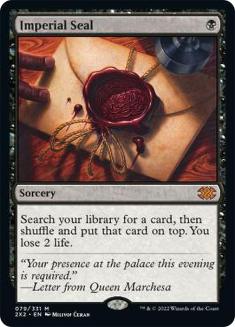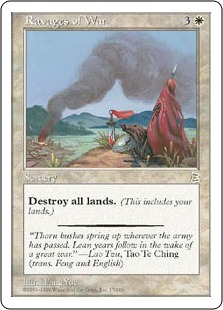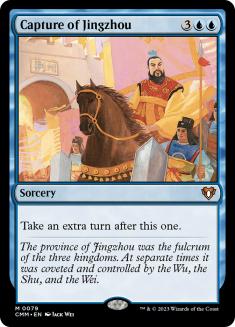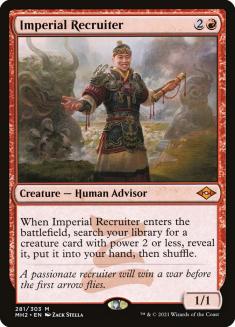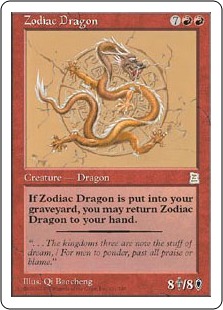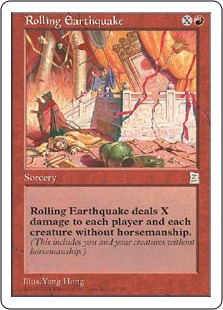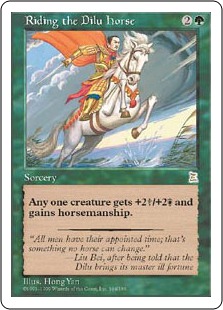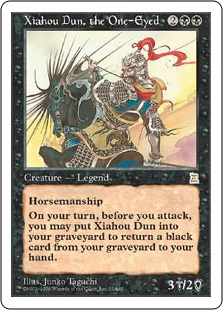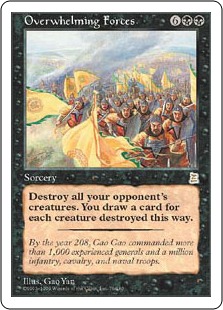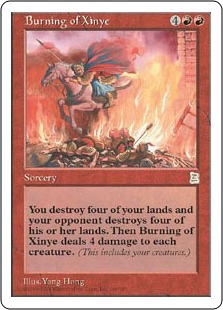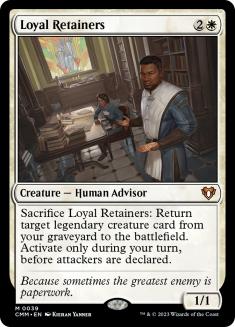With Khans of Tarkir finally legal for play in Standard, Magic’s yearly (soon to be twice-yearly) purge and resurrection is upon us. The best new cards are
finally finding homes for themselves, and next week’s article will cover the top decks from the Star City Open Series events in Indianapolis and New Jersey
as well as speculation on what will be played at Pro Tour: Khans of Tarkir on the weekend of October 10th.
Without any hard Khans data to dissect yet, however, I wanted to take a step back and see what you guys and gals wanted me to talk about this week. The
questions ran the gamut from Vintage to Commander, and most of them were super interesting. Before I dive in, let me take a moment to thank everyone who
contributed. Without you, this article would not have been possible. To show my deep appreciation for you, here’s a sweet picture of a giraffe.

Alright, let’s get to the questions:
Why is Ajani, Mentor of Heroes still $18 when Xenagos, the Reveler dropped as low as $6 prior to the advent of the Jund Planeswalkers deck? What has
caused Ajani to stay consistently high despite seeing very little play at all?
-
Alexander B.
There are a few factors at play here. The first and most important is that Xenagos, the Reveler was printed in Theros while Ajani, Mentor of Heroes was
printed in Journey into Nyx. Until Khans of Tarkir overtakes it in a couple of months, Theros will stand as the most popular and best-selling set of all
time. Journey into Nyx, on the other hand, was a fairly unpopular third set. There are more copies of Xenagos out there than Ajani, Mentor of Heroes.
Ajani, Mentor of Heroes is also very popular in casual circles. The ‘gain 100 life’ ultimate was unpopular with many competitive and Commander players, but
it’s the exact sort of eye-popping ability that many kitchen table players love. Lastly, I think you underestimate Ajani’s Constructed playability a
little. He was showcased in several cool Block decks at Pro Tour: Journey into Nyx and has seen a reasonable amount of Standard play this summer in Abzan,
Naya, and Selesnya shells. Casual mythics from small summer sets that appear in several rogue and tier 2 decks can certainly hold their value, especially
if there’s a planeswalker premium attached to them as well. Ajani actually did drop in price by about $5 this summer, but that drop seems to have
temporarily ceased. If he shows up in a good deck at some point in the next couple of weeks, I could see him surging toward $30.
I own a surplus of Theros
B
lock
Temples. What should I do with them?
-
Jordan L.
Prices on the Theros Block Temples have stabilized over the past few weeks as people wait to see what color combinations dominate Standard early on. I
doubt any of them will drop in price at any point soon, but several of them will likely spike in value once the first major tournament results start to
trickle in. I suggest holding onto a playset of each if you care about Standard, and selling your extras into hype – when the first batch begins climbing
in price, you should be able to lock in a nice profit. Hold the others until they jump as well – Standard should be more volatile this year (I hope so, at
least!) so most of the Temples should have their day to shine. Selling the ones that never spike in late March or early April before set rotation is a real
worry for anyone.
How likely is Imperial Seal to see a reprint and how much will it impact the price?
-
@DSuperstition
It is quite likely that there will be an Imperial Seal reprint at some point. Here’s the list of the ‘power’ cards in Portal: Three Kingdoms:
Diochan, Artful Beauty would have been on the list as well if I had written this article before her Commander’s Arsenal reprint.
So what do we actually have here? Of the eleven cards on this list, six of them have been reprinted in the last couple of years. Of the five others, Zodiac
Dragon would be a rather unexciting reprint. The card isn’t even good in casual play: it’s a dragon that doesn’t have evasion, costs nine mana, and has
errata stating that its ability only works if it is put in the graveyard from the battlefield, making it a kitchen table and Commander dud. Zodiac Dragon
is only valuable due to its rarity and interest from dragon collectors in a long-gone era of Magic finance.
Next up is Riding the Dilu Horse, which is certainly powerful and could be reprinted at some point, although I’m not sure Wizards of the Coast is eager to
showcase a card with such awkward templating. That leaves us with the top three cards on this list, which are functional reprints of Vampiric Tutor,
Armageddon, and Time Warp respectively. Any one of them has the financial firepower to make for either a good judge foil or the showcase card in a future
From the Vault set, and none of them are on the reserved list.
Will they be reprinted this year, next year, or five years from now? I have no idea. I personally sold my own copy of Imperial Seal a few months back just
in case.
What happens to Imperial Seal’s price of will depend entirely on where the card was reprinted. If Imperial Seal shows up in a From the Vault, it could drop
as low as $40-$50. A judge foil would probably hang out in the $100-$150 range. The Portal 3 Kingdoms version would certainly command a premium beyond
that, especially to players who dislike foils, but I doubt you’d have an easy time selling it for more than about $250 unless it was gem mint. If you’re
using your copy to play Vintage with on a regular basis, keep it. If it’s sitting in your closet, sell.
Is there enough value in Khans of Tarkir to make buying a box a good deal? Should I buy fetchlands with the money instead?
-
Michael P.
Buying sealed boxes of current sets at retail and cracking them for singles is a losing game.
In one of the large game stores I used to frequent, I’d see a small handful of players buy boxes, crack them right in the store, and then sell most of the
cards right back to the vendor at buy list prices. As you can imagine, this rarely worked out for the gambler, and the house tended to win.
A large portion of the “value” of a pack is tied up in its ability to be used in a draft. If you are buying a box to draft with friends, you will nearly
always get your money’s worth. It’s hard to get a cheaper and more fun night of entertainment, which will always be one of Magic’s best qualities. If you
are simply trying to go for value, buying the cards you want as singles is the better bet. I’d go fetchlands here.
Of course, if you’ve got money to burn, why not spend it on Return to Ravnica staples instead? They’re likely to provide
better value than either fetchlands or random Khans cards over the next couple of years.
Any thoughts on the price of the prerelease promos?
-
Tim P.
What’s your opinion on the prerelease foils? Will they be worth more or less than standard pack versions?
-
Jeremy B.
Why are the stamped prerelease foils of Khans cards worth substantially less than the non-stamped foils?
-
Mr. P
This was – by a huge margin – the issue I was asked about the most.
For a brief period of time last weekend, the internet was flooded with Prerelease foils. There were forty different Prerelease cards in Khans of Tarkir, so
a not-insignificant portion of the set was affected. Unlike previous Prerelease foils, these cards did not have alternate art, but they did have the
weekend’s date printed on them to distinguish them from foils opened in packs.
From anecdotal evidence gathered at various Prereleases, the eight promos available for each clan seem to have been printed without regard to rarity level.
As a Temur mage, you were equally likely to open the mythic rare Surrak, Dragonclaw or normal rare Trap Essence. At first glance, this seems to have
saturated the market with thousands of extra copies of chase mythics, and the initial price for these cards reflected that belief. As of this writing,
normal versions of Surrak Dragonclaw are available on Star City Games for $15, set foils are sold out at $30, and Prerelease foils are sold out at $9 – a
massive discount not only on the set foil, but on the standard pack version of the card.
Savvy dissenters were quick enough to realize that this price structure made little sense, and very few Prerelease foils are available for sale anywhere on
the internet right now. Copies I was able to find have a price at or just slightly lower than the set foil version. The cheapest prerelease foil Surrak on
eBay, for example, has a Buy it Now price of $25, same as the cheapest set foil.
It has been a long time since we’ve had a playable Prerelease promo. The last one was probably Mayor of Avabruck, who was a fringe player in Standard, and
before that it was Hero of Bladehold back in January of 2011. I had expected the move from one Prerelease card to five starting with Return to Ravnica to
lead to higher prices on promos, but it didn’t happen because the card quality was so poor. Now that we’ve got forty Prerelease cards for each event, some
of them are always going to be winners, and the value of each of those promos is going to be fairly high.
Back when Emrakul, the Aeons Torn and Wurmcoil Engine were Prerelease foils, they were worth approximately 10-20% less than their non-foil pack cracked
counterparts. These days, however, each Prerelease card is forty times rarer. If you’re waiting for the Prerelease versions of these cards to come down in
price relative to the pack foils, you might be sitting around for a heck of a long time.
Ultimately, I expect the Prerelease versions of these foils to settle in about 20-25% cheaper than the set foils. While some promo collectors will prize
them, most people who want foils for Cube and Commander will prefer the versions without dates stamped on them. On the trading floor, however, they’ll act
much closer to set foils than they will to non-foil pack cards, and their initial undervaluation will prove to have been a misplay. If you can get any of
these foils close to the discounted price, do so immediately.
Each fall set immediately becomes the best-selling set of all time. With that said, and with the fetchlands being highly desirable rares, is it
possible for any Khans of Tarkir mythic to hit $30+ this season?
-
Bobby B.
At any point this season? We’re already there! Sorin, Solemn Visitor (whom I’ll get to a little later on) has already surged past $30. Sarkhan, the
Dragonspeaker isn’t all that far behind himself. It’s certainly possible that another mythic rare (Wingmate Roc?) will break out this weekend or next and
the initial price surge will push it past the $30 mark for a little while.
Longer term, it is very hard for any fall set rare or mythic to stay above $30. Elspeth, Sun’s Champion and Stormbreath Dragon were the two chase mythics
in Theros, and they both stayed above $30 until early November of last year before beginning a value dip that they still haven’t recovered from and likely
never will. Market saturation gets all fall cards eventually, and the existence of the fetchlands will only serve to keep the prices even lower than they
got last autumn.
Could a Sorin or a Sarkhan stay at or above $30 all year? It’s possible, but you probably won’t like Standard all that much if it happens. That would
require most of the rest of the cards in Khans of Tarkir to bust out while one or two mythic rares end up being must-play unstoppable tier 1 dominators.
Wizards of the Coast usually balances their fall sets better than that, so my guess is that any $30+ cards we see during the first month of Khans Standard
will begin to fall off right around the time you start confirming all of your Thanksgiving plans.
Given the sales explosion, would you ever consider speculating on fall set rares?
-
Travis A.
There’s money to be made speculating on fall set rares, but it’s hard to do. In Return to Ravnica, the only cards worth buying right away were Deathrite
Shaman and Sphinx’s Revelation. In Theros, it was only Hero’s Downfall, though anyone who bought Sylvan Caryatid at $5 is certainly happy now, and if you
bought Master of Waves at $10 you had a brief window to sell them for $15-$18.
If you’re a speculator, you only have a few small windows where buying mythics and rares from fall sets makes any kind sense:
- Immediately when the card is spoiled and the first few copies are put up for sale, assuming you can analyze a future powerhouse faster than anyone
else. - During the first few rounds of the first major tournament after the set is released, assuming you’re quicker than everyone else and there’s a
breakout card. - During the first few rounds of the first Standard Pro Tour after the set is released, also assuming there is a breakout card to be found, and
you’re very quick on the draw.
Even in these corner cases, it’s easy to lose money. Even if you bought Thassa, God of the Sea and Master of Waves right before they broke out at Pro Tour
Theros last October, you only had a few days to lock in a profit before they fell back to pre-PT highs. That’s the power of fall set market saturation
these days.
So yes, there are some quick-flip opportunities for day traders, and it’s possible that we’ve all missed on the next Sphinx’s Revelation and that will
reveal itself to us at some point over the next few weeks, but it’s far more likely that you’re going to buy four copies of a card that will drop in price
every day for the next few months. I’d rather speculate on cards that are out of print and already at their price floor.
What happened with Sorin?
-
Pierre V.
Sorin, Solemn Visitor jumped in price by about 60% last week. He pulled ahead of every other card in Khans of Tarkir. and his value is now second only to
Nissa, Worldwaker in all of Standard. And this happened without a single sanctioned game of the new Standard environment being played!
This is hype, pure and simple. Sorin started out as an undervalued mythic because he’s not as good as Sorin, Lord of Innistrad and some people were
disappointed about that. Then came the overcorrection, and things got nutty. $30 is the absolute ceiling for this card long term (short term is $35-$40) if
it ends up being the chase mythic in the set and a slam-dunk tier 1 staple. Even if that happens though, I can’t recommend buying it at current retail –
and right now, we don’t even know if the card will show up anywhere! If you can trade these away for $30 right now, do so. That advice doesn’t change if
Sorin is the breakout card of the weekend,either. Any time you can sell a fall set mythic at $30, you should.
When should I buy Khans singles for personal use? Will staples keep rising or start to plateau?
-
Matt T.
The Khans of Tarkir cards that do not see play this weekend will begin to fall in price right away. Those that do see play will either rise a little or
stay stable through the end of October. At that point, market saturation will kick in, and we’ll see everything in Khans steadily drop through the end of
the year. If you’re a patient casual player, wait until Christmas to buy in. If you’re a Standard player, you’ll have to bite the bullet a little earlier.
The trick is to hold off as long as you can.
Why are the Buy-a-Box promos so good while the Game Day Top 8 promos are so bad? Does WotC print good Buy-a-Box promos to help sell boxes?
-
Bobby B.
Let’s take a look first and see if Bobby has a point. Here are all of the Buy-a-Box promos:
- Honor of the Pure
- Day of Judgment
- Celestial Colonnade
- Guul Draz Assassin
- Birds of Paradise
- Memoricide
- Mirran Crusader
- Surgical Extraction
- Chandra’s Phoenix
- Devil’s Play
- Gravecrawler
- Silverblade Paladin
- Cathedral of War
- Supreme Verdict
- Nightveil Specter
- Ratchet Bomb
- Sylvan Caryatid
- Fated Conflagration
- Eidolon of Blossoms
- Goblin Rabblemaster
Out of twenty cards, that’s two unplayables, two more that were bulk rares at some point during their run in Standard despite seeing some play, three solid
tier 2 rares, and thirteen tier 1 format staples.
Here are the Game Day Top 8 promos in contrast:
- Mycoid Shepherd
- Emeria Angel
- Kalastria Highborn
- Deathless Angel
- Mitotic Slime
- Tempered Steel
- Black Sun’s Zenith
- Myr Superion
- Dungrove Elder
- Elite Inquisitor
- Zombie Apocalypse
- Killing Wave
- Magmaquake
- Cryptborn Horror
- Firemane Avenger
- Melek, Izzet Paragon
- Goblin Diplomats
- Nighthowler
- Pain Seer
- Dictate of Kruphix
- Chief Engineer
Out of 21 cards, we’ve got eleven unplayables, five more that were bulk rares at some point despite seeing play, two tier 2 rares, and just three tier
1format staples. Yeah, I’d say Bobby has a point here about the respective qualities of these cards.
Why are Game Day promos so bad while Buy-a-Box promos are so good? My guess is that ‘good’ and ‘bad’ aren’t the right words here. For the most part,
Buy-a-Box promos are very strong cards in Standard, while the Game Day promos are solid kitchen table casual cards, often aimed at Johnny-style deck
builders. I think something quite shrewd is going on here: by making the Buy-a-Box promos Standard staples, WotC is attempting to market them toward the
kind of player least likely to go down to the store and plop money down for an entire box, that is, competitive players who generally only draft and buy
singles. These kinds of players already enter tons of Constructed events, though, so why bother trying to lure them to Game Day? Instead, those foils are
targeted at casual deck builders, the exact kinds of players who might need an extra push to enter their latest kitchen table creation in a real,
sanctioned Magic event. If WotC’s goal is to get tournament players and casual deck builders engaged in retail behaviors that they might not otherwise
consider, mission accomplished.
On a related note, this analysis makes me feel even more silly about dismissing Goblin Rabblemaster so quickly. When in doubt, assume that the Buy-a-Box
promo is going to be one of the marquee rares in the set. History seems to bear that out, which is good news for the future of Rattleclaw Mystic.
How high can Hero’s Downfall go?
-
Sam L.
Hero’s Downfall has been as high as $15 and has low as $5. Right now, buying one will set you back $8. Part of the price reduction came from the Standard
summer lull, but some of it came from its inclusion in the Born of the Gods event deck. Utter End, Murderous Cut, and several of the charms will likely
take up slots that could have gone to Hero’s Downfall, but I wouldn’t be surprised if last year’s breakout removal spell still ends up seeing a whole lot
of play.
Hero’s Downfall can go as high as $15 again, but I strongly doubt that will happen. There are more options now, and black will likely not be quite as
powerful without Desecration Demon, Pack Rat, and some of the other major staples we’ve lost. I expect the card to bounce around between $6 and $10 with a
potential peak at $12. If you’re sitting on extra copies, selling now is fine.
I have been away from the game for a few years and I have 1-2 playsets of every staple in Modern and Legacy. I just finished college and my collection
has become something of a nest egg for me. What should I do with the cards now that I don’t actively have time to play and maintain a collection
anymore? I know the old adage is “never sell your collection,” but it seems to me that older cards are in a bull market right now. Saying that any
market is due to crash simply because it hasn’t done so in a while is the gambler’s fallacy, but I do want to be protected in case Wizards decides to
scrap the reserved list or stops support for Legacy. Where do you see the market for these older cards heading?
-
Scott
I don’t think a major crash is coming to Magic any time soon, Scott. If you haven’t been in the game for a while, I know it can seem like Underground Sea
jumped from $50 to $350 overnight, but those prices actually make sense when you consider how many more people are playing right now. Magic probably is
about nine times more popular now than it was when we had $50 Underground Seas, and WotC is not making any more of them. Both Legacy and Vintage are doing
fine without WotC showing them much support, and there are many avid fans of both that are promoting a style of Magic play that simply cannot exist in the
newer formats. Your reserved list cards are fine to hold and will be very hard to replace should you ever decide to do so.
Modern is slightly more difficult to predict. Assuming the format stays popular (I think that it will) a certain number of staples will spike each year
while other cards tank in price thanks to reprints and decks falling out of favor. I expect this cycle to continue, though I do think that WotC is serious
about making the format more affordable. If you’re going to sell your Modern collection, do it in February, March, and April – those months generally mark
the seasonal high for Eternal cards.
The decision to sell is both difficult and personal. On the one hand, a large Legacy and Modern collection can net you as much as a full year’s worth of
pay if you make the effort to part it out. That amount of money can be life changing. On the other hand, if you ever want to play those formats again,
buying back in from scratch can be like staring up at an impenetrable brick wall, especially if card prices go up again after you sell. I’d take a long
time (say, the three months between now and when selling makes sense) and think about what that money would mean to you – and also how you’d feel if the
market does collapse and your collection drops in value by 50% or more. If you do decide to sell out, be sure to keep a couple of decks around and a small
binder filled with your favorite cards. You’ll be happy you held on to those no matter what happens.
I have a random assortment of sealed product. Hold, open, or sell the following: New Phyrexia loose packs, Rise of the Eldrazi loose packs, an
Innistrad fat pack, the Elspeth vs. Tezzeret Duel Deck, a Ravnica: City of Guilds tournament pack, the Betrayers of Kamigawa Rat’s Nest theme deck, and
several Commander 2013 decks.
-
Tim B.
Cool collection of stuff. Let’s check the Star City retail prices on each first, shall we?
- New Phyrexia Booster Pack: $6 (sold out)
- Rise of the Eldrazi Booster Pack: $12 (sold out)
- Innistrad Fat Pack: $100
- Elspeth vs. Tezzeret Duel Deck: $60 (sold out)
- Ravnica: City of Guilds Tournament Pack: $35 (sold out)
- Rat’s Nest Theme Deck: $40 (sold out)
- Commander 2013 Set of Five: $120
Hmm, that’s only marginally helpful. Not only is Star City sold out of most of these things, but you’re probably not a large Magic card retail store like
they are. Let’s check eBay completed values and see what comes up:
- New Phyrexia Booster Pack: $8-$11
- Rise of the Eldrazi Booster Pack: $15
- Innistrad Fat Pack: $100 – $120
- Elspeth vs. Tezzeret Duel Deck: $42-$47
- Ravnica: City of Guilds Tournament Pack: $28-$30
- Rat’s Nest Theme Deck: $45
- Commander 2013 Set of Five: $90-$100
I’ll be honest, I had no idea how well sealed booster packs sold on eBay these days! Sealed box prices bear this out, and Rise of the Eldrazi booster boxes
sell for well over $500 on a regular basis. That’s incredible. Honestly, I would sell everything on your list except the Commander 2013 decks as-is –
they’re certainly worth more sealed than opened as singles. Hold your Commander 2013 decks for another couple of years. The Commander 2011 decks sell for
$350-$400 as a sealed set, so there’s a bunch of upside here.
What do you think the initial Standard metagame will be? What decks/archetypes do you see arising from the Pro Tour?
-
Jeremy B.
When in doubt, bet on the cards that have been there before. Early on, people will be relying on tried and true tactics, and I’d be shocked if we see a
major shake-up before the Pro Tour. I don’t know how good Sorin, Solemn Visitor will end up being, but I do know exactly how good Stormbreath Dragon is.
Here are the cards that will define the new metagame, at least at first:
- Goblin Rabblemaster
- Stormbreath Dragon
- Sylvan Caryatid
- Courser of Kruphix
- Polukranos, World Eater
- Nissa, Worldwaker
- Thoughtseize
- Hero’s Downfall
- Elspeth, Sun’s Champion
- Brimaz, King of Oreskos
- Xenagos, the Reveler
I expect that we’ll see a couple of different Rabble Red decks: one mono-red, one Boros, and one Rakdos. We’ll also see a bunch of base green decks running
four copies each of Courser, Polukranos, and Caryatid. At least one green build will also run Xenagos, the Reveler and Stormbreath Dragon while another
will run Nissa, Worldwaker. At least one deck will be controlling and have Elspeths in it. A bunch of decks will have black as a second color in order to
take advantage of Thoughtseize and Hero’s Downfall. There will be a graveyard-centric Sultai deck, an Abzan Midrange deck, and a Mardu Midrange deck as
well, though it might take a few weeks for these brews to find their feet. Fetchlands, painlands, and temples will all see a bunch of play.
And then the Pro Tour will happen and the metagame will be blown to pieces yet again. What decks will emerge from there? Based purely on guesswork and my
own card evaluation skills, I’d wager that we’ll see an awesome Temur deck and/or an awesome Sultai deck come out of Pro Tour: Khans of Tarkir.
See how none of the current powerhouse cards are blue? That will change, and I expect that the pros will find a few cards that match the established green
all-stars with some sweet blue spells that we’re currently underrating. Could Rattleclaw Mystic be the breakout card of the tournament? Its price is
already too high, but if it drops enough between now and then, it could be a nice pickup.
This Week’s Trends
- Khans of Tarkir is surging as we head into the first weekend of tournament legality. Ashcloud Phoenix, Sarkhan, the Dragonspeaker, Sorin, Solemn
Visitor, Wingmate Roc, Bloodsoaked Champion, Butcher of the Horde, Crackling Doom, Jeskai Ascendancy, Rattleclaw Mystic, Siege Rhino, Utter End,
Windswept Heath, and Wooded Foothills are all up. Only Surrak Dragonclaw is down significantly. - Outside of Khans, other Standard staples are on the move. Brimaz, King of Oreskos, Kiora, the Crashing Wave, Keranos, God of Storms, Mana
Confluence, Stormbreath Dragon, Sylvan Caryatid, Ashiok, Nightmare Weaver, Polukranos, World Eater, and the painlands continue to rise. - The only cards falling in Standard right now are the casual and Commander rares and mythics from M15. Garruk, Apex Predator, Sliver Hivelord, Soul
of New Phyrexia, Waste Not, Perilous Vault, Sliver Hive, and Genesis Hydra continue to drop in price. This trend should continue throughout the
next couple of months unless any of these cards break out in competitive play. - Modern and Legacy are both still flat, with only the fetchlands dropping in price. There’s a Legacy GP in New Jersey on the 14th of November as
well as a Modern GP in Spain on the same day. There’s also a Modern GP in December, another in January, and another in February as well as a Modern
Pro Tour. As those dates get closer and Khans Standard becomes a little less exciting, expect some movement in both Modern and Legacy prices.


